
Believe it or not, hiding behind the badly Photoshopped DVD cover to the left is one of the most anticipated sword and sorcery follow ups of all-time. Finally seeing release this week in the United States via Lionsgate DVD, TALES OF AN ANCIENT EMPIRE is the long-awaited follow up to THE SWORD AND THE SORCERER (1982), director Albert Pyun’s first and most successful theatrical release. Waiting 30 years between films is bad enough for fans, but the end result was equally disappointing (read our full original review
here). What isn’t known are the years of on-and-off starts/stops and behind-the-scenes developments the filmmakers dealt with. Thankfully, director Pyun has been kind enough (especially after our review) to give us the back story on the continuation and share some tales about the making of TALES.
THE SWORD AND THE SORCERER was one of the great, entertaining films from the “class of 1982,” an era where horror, sci-fi, and fantasy films were at a creative peak. Having been turned down by most major and minor studios in Hollywood over a period of years, Pyun and his co-writers Tom Karnowski and John Stuckmeyer finally caught a break when they took their script and storyboards to producer Brandon Chase the day before EXCALIBUR (1981) opened. Chase, fresh off the box office success of ALLIGATOR (1980), saw potential in the project and the film was into production within eight weeks of their initial meeting.
Chase knew he was taking a risk on a first time filmmaker, but it paid off handsomely when SWORD opened just over a year later. Riding the wave of fantasy popularity spawned by Dungeons & Dragons, SWORD was released theatrically by the independent distributor Group 1 on April 23, 1982 on 223 screens. Despite being on a fraction of screens occupied by most top ten films at the time (for comparison, the raunchy comedy classic PORKY’S was on 1,474 screens), SWORD debuted in fifth place with a hefty per screen average of $7,720 (over two thousand dollars higher than the next closest average). The film was an unbridled success and it jumped to the no. 2 position when it expanded to 660 screens the next weekend. In total, the film spent four months in top 20 at the box office, ending with a final domestic box office take of $39,103,425. Adjusted for inflation (1982’s ticket price average of $2.94 vs. 2012’s average of $7.94), the film grossed over $106 million in today’s box office dollars. Not bad for a film with a neophyte director and a budget in the range of $3-4 million.
Two-page Variety ad circa May 1982
touting SWORD's box office success (click to enlarge):
Naturally, like any film that turns such an enormous profit, the producers were more than happy to announce plans for a sequel. Hell, they didn’t even need to as the filmmakers took care of that for them. In the tradition of 007 films ending their credits with “James Bond will return in…” text teases, SWORD promised more with an onscreen end credit that read: “Watch for Talon’s Next Adventure TALES OF THE ANCIENT EMPIRE coming soon.”
THE SWORD AND THE SORCERER
end credits tease:
Sales agent Walter Manley wasted little time on the project and announced in a May 1982 Variety issue that his company would begin taking presales at Cannes. He claimed a script was finished and the production ready to roll. Manley peppered his words with bold talk of shooting in Germany with a budget of $12,000,000 for a Christmas 1983 release.
Additionally, an announcement of the sequel project was also placed in Box Office magazine in May 1982.
While the distributor was high on pimping the project, producer Chase had a bit more standoffish approach. Speaking to Fangoria around the same time, he took a decidedly more cautious stance, waiting to see how the market would handle the upcoming glut of sword and sorcery pictures.
In the end, Chase was right as public interest fell under the weight of beefy guys with names like
ATOR and
DEATHSTALKER. It’s always the Italians, right? Chase’s prescient thoughts were all the more confirmed when CONAN THE DESTROYER (1984) lived up to its moniker by killing the once hard-hitting genre with bad comedy and a PG rating. A year later you couldn’t pay people to step into a theater to see RED SONJA (1985), co-starring the genre’s poster boy Arnold Schwarzenegger. Well, except for Video Junkie head Tom, he was front and center.
On Albert Pyun’s end, things never really took off on the sequel in the early 80s. “I don't think there was a serious attempt to make sequel,” Pyun reveals. Regardless, the director did work on an early rough draft of the sequel script around that time. “I had written a sequel called THE SERPENT’S ORB,” he says. “It dealt with the kingdom they were riding off to save at the end of SWORD. But it was much larger in scale with dragon creatures unleashed by a sorceress as the main villains. Much of the movie was set in caves.”

In all fairness, Pyun also soon found himself to be a very busy man as he embarked upon the kind of directing career that would send shivers down Terrence Malick’s spine. Following SWORD’s debut, Pyun worked seemingly non-stop over a period of nearly two decades (1983-2001) as he directed an astonishing 35 feature films (with 5 films alone released in 1996!). Pyun found himself all over the map both literally and figuratively as the shooting locations were as disparate as the film’s quality. This globetrotting period found Pyun working for companies from Cannon to Empire to Miramax. When asked if he ever thought of bringing the SWORD sequel property to these studios, he had a surprising answer. “No, I was really done with fantasy as I just came off two other difficult fantasy shoots – RADIOACTIVE DREAMS (1985) and VICIOUS LIPS (1986),” he explains. “I wanted to make contemporary set movies. I was exhausted building entire worlds from scratch.”
Interestingly, an attempt to resurrect the production came via Walter Manley in the mid-1990s. Manley had spent most of the 1980s running Manley Productions, Inc. (MPI) before finding himself in legal trouble in 1993 for failure to pay $300,000 to the producers of HARD ROCK NIGHTMARE (you can read more about this fascinating story in
this Variety article). Come 1995 he had christened a new company, Palisades Communications, and offering the SWORD sequel among his preproduction projects at Cannes that year (listed as “Brandon Chase’s THE SWORD AND THE SORCERER PART II). Also take note of his offering of Meir Zarchi’s unmade I SPIT ON YOUR GRAVE sequel (complete with an amusing spelling error) and MPI’s perpetually announced MANIAC II (6 years after MANIAC Joe Spinell had passed away).
On Pyun’s end, he never really thought about the sequel again until the 21st century had appeared. “I did try to get a loose sequel going with Elie Samaha and Franchise Pictures in 2002,” he states. “The script was written for Dolph Lundrgren and called CITY OF BLOOD. It was really the genesis of TALES as it introduced vampires into the mix.”
 |
The only memorable thing about
REDLINE (2007) |
It wasn’t until 2007 that Pyun started taking the idea of a follow up seriously. According to
his blog, he studied what the genre had offered in the ensuing 25 years and felt his return could be done. In August 2007 he
announced to Ain’t It Cool News (AICN) that a follow up would begin production in Tunisia in October. Initially, Pyun was hoping to adapt a sci-fi script called SWEATING BULLETS by his LEFT FOR DEAD screenwriter Chad Leslie. “Chad's script was very clever and set in the distant future. A sort of BLADE RUNNER / BRAZIL type world,” he explains. “The premise was how people who had money but were dying or diseased or crippled could buy another body and have their own thoughts and soul put into the new body. It was a mystery thriller set with that concept. It translated easily into a historical sword and sorcery epic.”
Pyun briefly worked with producer Mario Kassar on trying to get TALES made via Chicago Pictures. The script got positive reaction and they had several meetings. Unfortunately, that outfit died a quick death thanks to REDLINE (2007), a forgetable street racing disaster probably best known now for lead Eddie Griffin accidentally wrecking a $1.5 million dollar Ferrari Enzo during a charity race practice run to promote the film.
Feeling that Leslie’s script might be too expensive to produce, Pyun had his producer Cynthia Curnan work out his ideas in late 2007. The title saw a slight modification as it went from TALES OF
THE ANCIENT EMPIRE to TALES OF
AN ANCIENT EMPIRE. Satisfied with the resulting script, Pyun quickly ramped up production in the first half of 2008. Plans initially included head back down to Argentina (where Pyun had shot LEFT FOR DEAD) and preproduction began. Slowly over the next few months Pyun saw his production changing (24 shooting days whittled down to 11 days). When other production expenses began balloon their budget of $450,000, Pyun and company decided to pull the plug on the May 2008 filming start date down in Argentina.

So preproduction began all over again with the producers now aimed for a fall 2008 start date. Various actors (Christopher Lambert, Yancy Butler, Leah Cairns) were announced via AICN in July 2008 as being part of the cast, but they never made it into the film. Adding to the confusion, the IMDb listed Val Kilmer as a cast member although he was never in the film. Ultimately, it was money and budget issues that kept these folks from coming on board. “Leah was in Canada and we couldn't afford to bring her to LA,” Pyuns discloses. “With Christopher and Yancy we couldn't agree on a fee. Again, we were so strapped budget-wise and the fact that the funding for the budget never fully materialized hurt those areas.” The money woes even hurt the return of SWORD star Lee Horsley as Talon. “We couldn't afford him for more than a day so we had to create [his role] so it could be done in a day,” Pyun states.
Cameras finally started rolling in December 2008 with a cast that included Kevin Sorbo, Whitney Albe, Melissa Ordway, Victoria Maurette, Ralf Moeller, and Matthew Willig. Treating the time between films as real-time, TALES tells the story of Princess Tanis (Ordway) convincing her half-siblings – Aedan (Kevin Sorbo), Malia (Sarah Ann Schultz), and Rajan (Janelle Giumarra) – to combat vampire sorceress Xia (Albe) before she can take over the kingdom of Abelar. So much for the further adventures of Talon, eh? Pyun edited the film throughout 2009 and into 2010. Early efforts to release the film on April 23, 2010 (28 years to the day of the original’s release) via Pyun’s direct-to-DVD distribution fell through, as did a planned Comic Con screening. The first public screening finally came in July 2010 at the Fright Night Film Festival. In the fall of 2010, the film was released in Thailand on DVD. This was an licensed release, but not Pyun’s final cut. “It was attempt by the original producer to raise cash,” Pyun says bluntly.
Pyun promised fans this wasn’t his final version and, indeed, in 2011 he began shooting new footage. In January 2011, Cazzy Golomb shots scene as a narrator in an effort to streamline the film’s confusing plotline. Later, in May 2011, Pyun gathered a collection of actors for his past production in order to expand the film’s running time. Further shooting took place in the deserts of Nevada in August 2011. “In the year in between we added Michael Pare', Victoria Maurette, Sasha Mitchell, Norbert Weisser and Jessica Delgado,” he reveals of a four day shoot. “Actually it was really part of the RED MOON shoot and we just assigned the footage for use on TALES to promote RED MOON.”

So what in the world is RED MOON? It is actually the sequel to TALES teased in that film's cliffhanger. “The RED MOON script is great and we are going to complete it this spring. I think it will make up for TALES creatively,” says Pyun, quite aware of the fan backlash on TALES. “Yes, but I expect a backlash on all my films. So I'm armored and prepared for the lynch mob,” says the prolific director. “I am resigned that my style of filmmaking is not likely to appeal to a large audience.”
Believe it or not, the TALES journey doesn’t end there. The large audience mentioned above will still not be seeing Pyun’s final cut as apparently Lionsgate has modified the film even more for their DVD release. Exactly what has been changed is a mystery even to the film’s director as even Pyun has not seen their version. “Very disappointing” is the quick and simple way he can describe it. “It’s very upsetting to me that they would make the changes and with me not involved. Just to gain 4 minutes of screen time. It really hurts the film which isn't strong enough to withstand that change,” says Pyun with some frankness about his final product. TALES OF AN ANCIENT EMPIRE is out now on DVD.









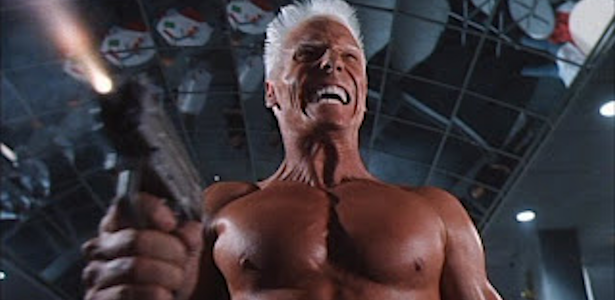
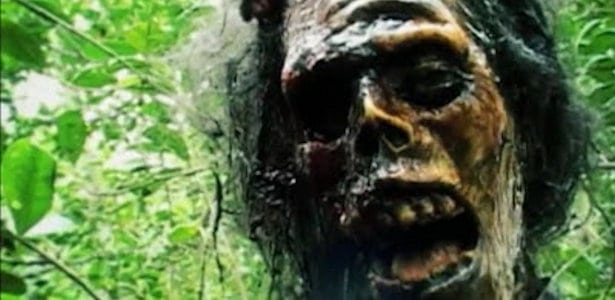
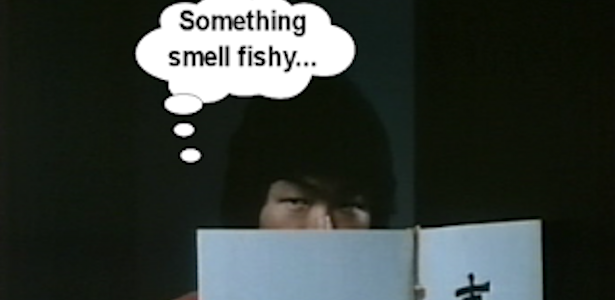
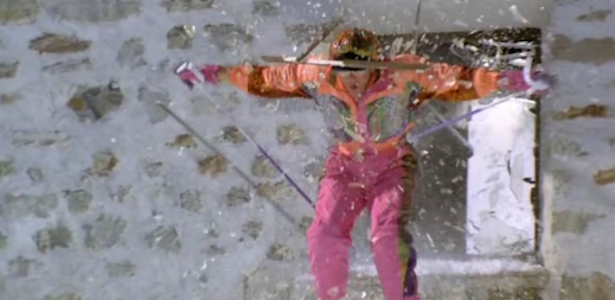
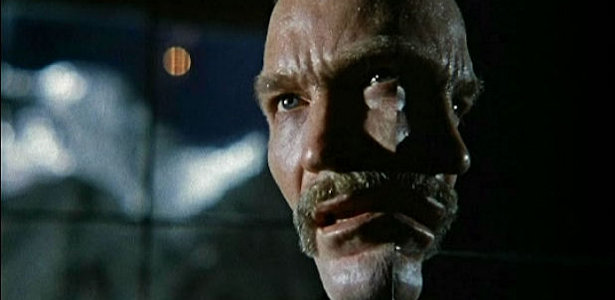















.jpg)








































